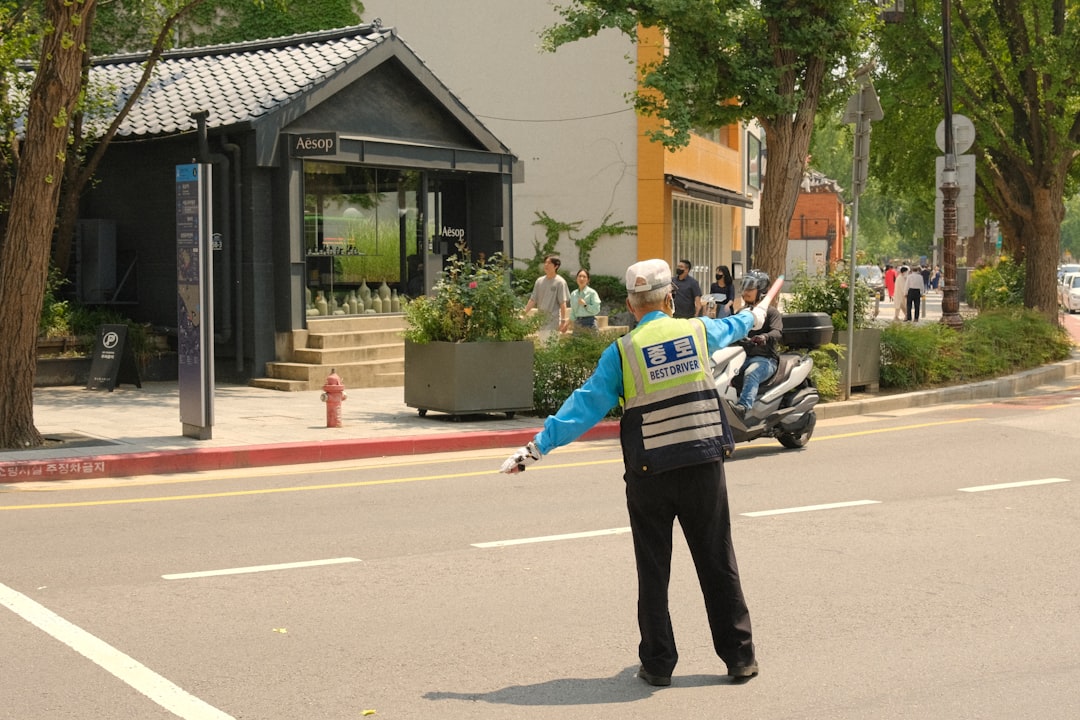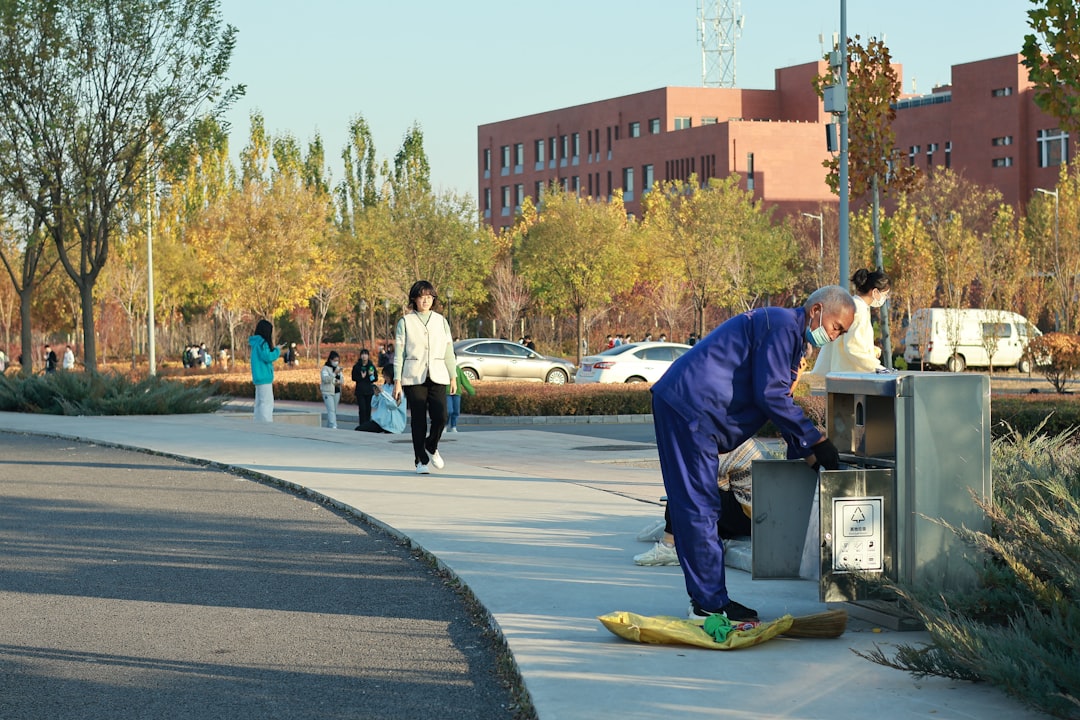

Engage prospects with a scan and streamline customer engagement with FREE QR code marketing tools by Sona – no strings attached!
Create a Free QR CodeFree consultation

No commitment

Engage prospects with a scan and streamline customer engagement with FREE QR code marketing tools by Sona – no strings attached!
Create a Free QR CodeFree consultation

No commitment
As urban populations expand and sustainability becomes a top priority, street cleaning services are being asked to deliver cleaner, safer environments with greater transparency and efficiency than ever before. Traditional methods like printed notices, manual service logs, and static schedules such as street cleaning schedules often leave citizens and stakeholders uninformed or disconnected from the value being provided. In a field where public health, safety, and regulatory compliance are at stake, missing these connections can diminish trust and reduce service effectiveness.
A recurring frustration for providers is missing valuable feedback or engagement from residents and commercial clients simply because these touchpoints are not captured. Anonymous observations, unreported maintenance issues, and missed service validations can accumulate into lost opportunities for improvement. Inconsistent or delayed communication hinders quick resolution and leads to diminished public trust and compliance issues, especially when data is siloed in incomplete or outdated logbooks.
Integrating QR codes into daily operations allows street cleaning service providers to seamlessly connect offline service events with digital accountability, empowering stakeholders to access real-time information with a simple scan. QR codes can unlock access to customer feedback forms, scheduling updates, digital service records, recycling education, and much more, fueling engagement and making every interaction count toward measurable improvements in transparency and performance.

Connecting with residents or facility managers during or after a street cleaning event has long been a challenge. Crews move quickly, schedules shift based on weather, and stakeholders often do not know where to look for updates or service verification. Outdated placards and paper-based logs make it difficult for citizens to know when cleaning occurred, while operators spend time on manual reporting that does not reflect real conditions. The result is a feedback gap that erodes trust and slows continuous improvement.
QR codes bridge this gap by turning every vehicle, sign, and notice into an interactive touchpoint. Instead of relying on paper slips or bulletin posts, a scan takes people straight to a service log, feedback form, or scheduling update. Engagement is easier to start, simpler to track, and faster to resolve. Analog processes like handwritten route sheets, manual validation stamps, and taped signs can be replaced with digitally connected experiences that update in real time and record engagement automatically.
When you operationalize these steps, engagement becomes part of the daily routine, not a separate task. Scans convert interest into action and action into data, helping teams consistently understand what is working and where to iterate. Sona QR supports this transformation with dynamic codes, integrated analytics, and CRM syncing so every scan feeds a measurable, accountable process.

Many street cleaning operations struggle to inform the public about completed routes, validate services for compliance purposes, or reliably gather field data. When interactions are not tracked, residents who want to engage fall through the cracks and crews miss timely reports about overflowing bins, debris, or hazardous materials. That lost feedback delays response and weakens reporting for contracts and regulatory requirements.
QR codes fix these visibility gaps by linking physical events to digital records. A resident who passes a QR-enabled sign can confirm that a street was cleaned at a specific time, view the next scheduled visit, and submit a report if an area was missed. Teams receive verified, structured inputs rather than anonymous calls or handwritten notes. Records update automatically and can be reviewed within a central system.
Street cleaning providers who embrace QR-driven visibility tend to experience faster incident resolution, higher satisfaction among residents and property managers, and stronger alignment with compliance obligations. The technology is low cost and quick to deploy, yet it fundamentally reshapes how you communicate and prove value.
Not all QR codes are the same. Choosing the right format and destination ensures each scan turns into a productive outcome. In street cleaning, the most useful formats pair public-facing access with crew tools that streamline operations and documentation.
Start by mapping your common interactions. Public stakeholders often need to verify service, see schedules, or report issues. Internal teams need to log completion, access updated SOPs, and request support. Then match each need to a QR format and destination that captures intent with minimal friction.
By aligning QR formats to specific operational gaps, every scan becomes a targeted step toward improved service quality and engagement. With a platform like Sona QR, you can manage these formats in one place and update destinations without reprinting codes.

Growth in street cleaning often hinges on visibility and trust. Prospects include neighborhood associations, commercial property managers, event organizers, and facilities with recurring needs. Many of these stakeholders already see your crews and assets in the field, but their interest goes uncollected because there is no quick way to connect. QR codes turn daily exposure into measurable demand.
Strategic placement is the key. Use locations and assets that draw frequent attention. Pair each code with a benefit-driven call to action that tells people exactly what they will get if they scan. With dynamic links and CRM integration, even a casual scan can become a nurtured relationship backed by performance data.
When scan data flows directly into your CRM through Sona QR, you can segment interest by location, facility type, and use case. That makes it easier to tailor follow-ups, forecast demand by region, and prioritize outreach that converts.

Street cleaning has predictable moments where a scan can save time, reduce confusion, and capture value. Designing a few high-impact use cases provides a strong foundation for broader adoption. Focus on problems that regularly slow your operations or frustrate stakeholders.
It helps to start with the three most visible pain points: service validation, issue reporting, and feedback collection. These use cases align with citizen expectations and contract requirements, so the payoff is immediate and clear.
Together, these use cases transform a historically opaque process into a transparent, collaborative experience. They also create a dependable stream of structured data that improves routing, staffing, and communication over time.
Every scan is a signal that reveals who is paying attention, what they need, and where engagement happens. When you deploy unique QR codes for different neighborhoods, facility types, and service categories, you can automatically segment audiences by context and intent. This turns anonymous interest into a pipeline of qualified contacts who have demonstrated need through action.
Capturing and organizing these signals lets your marketing and sales teams apply precision to outreach. With location, timing, and use case attached to each scan, you can distinguish between residents who want schedule alerts, property managers who need quotes, and city stakeholders who require compliance data.
This approach eliminates guesswork, reveals seasonal patterns, and surfaces upsell opportunities, such as seasonal leaf collection, post-event cleanups, or waste stream audits for commercial clients.
Street cleaning providers operate across a mix of offline and digital channels: city signage, vehicles, door hangers, invoices, social media, and events. The challenge is keeping messaging consistent and measurable across that spectrum. QR codes unify these touchpoints by making every physical impression a direct path to a digital action.
Once QR is embedded in your mix, you can compare performance across channels, tie engagement to a location or asset, and adjust campaigns in near real time. That makes budgets work harder and creates a cohesive experience from first impression to service delivery.
QR codes serve as the offline onramp to your digital marketing engine. With a centralized platform like Sona QR, you can manage all codes, monitor performance, and sync scan data with your CRM and ad platforms to run informed, connected campaigns.
Launching a QR program is straightforward when you follow a clear plan. The goal is to choose valuable use cases, match them to the right code types, ensure scannability in the field, and measure what matters. Each step below builds toward reliable, repeatable results that scale.
Use this checklist to move from idea to impact. Tailor each phase to your environment, whether you serve dense downtown zones, suburban corridors, or mixed-use districts, and whether your audience is residential, commercial, or municipal.
Start with one or two problems that create friction today and align them with QR outcomes that are easy to understand. Examples include logging cleaning events for transparency, collecting public feedback in real time, or providing compliance documentation to city partners.
Choose between static and dynamic codes. Static codes are fixed and suit unchanging destinations; dynamic codes are editable and trackable, ideal for field assets that demand updates and analytics.
Design influences scan rates as much as placement. Your code should be easy to see, simple to understand, and effortless to scan in real-world conditions like glare, rain, or low light.
Roll out codes where they will be seen most and where the action they trigger is most useful. Combine permanent placements with temporary or mobile deployments for maximum reach.
Measurement converts a good idea into a scalable program. Review performance regularly and make adjustments to improve engagement and outcomes.
A structured rollout like this helps teams build momentum quickly. With Sona QR, you can centralize code management, automate integrations with CRM tools, and access real-time analytics that shorten the path from scan to service or sale.
Street cleaning leaders often ask how to prove that field engagement leads to measurable results. Historically, data has been fragmented across logbooks, email chains, and ticketing systems. QR-driven analytics change that by recording the who, where, and when for every interaction and linking those events to outcomes like resolved issues, contract renewals, or add-on services.
To make the most of this data, instrument each QR experience with clear goals. Treat scans as the top of a mini-funnel: scan to load, load to action, action to outcome. Choose a model like single vs multi-touch attribution models. Then integrate those events with your CRM and reporting tools so marketing, operations, and sales share a common view of progress.
When analytics are centralized, you can run controlled pilots, set benchmarks for scan rates and conversion, and standardize performance reviews. Over time, this turns QR campaigns into a reliable lever for operational quality and growth.
Once your first campaigns are live, small optimizations can create big gains in engagement and data quality. The goal is to make scanning feel effortless, to route each interaction to a helpful outcome, and to capture just enough context to fuel the next best action.
Operational alignment matters as much as design. Train teams to promote QR interactions during field work and equip them with talking points that explain the benefit. When stakeholders know what happens after they scan, they are more likely to participate.
Sona QR integrates with popular CRMs and automation tools, making workflow setup straightforward. With each improvement, your system becomes more responsive and your data more reliable.

QR-powered campaigns have already transformed how sanitation and maintenance teams communicate with the public and clients. The most successful programs meet people where they are and connect scans to an immediate win, like rapid confirmation, timely updates, or a faster fix.
Use these scenarios as inspiration to tailor your own deployments. Borrow the placement ideas and adapt the outcomes to your service model, whether you focus on municipal contracts, private facilities, or mixed portfolios.
These examples highlight a consistent pattern: when it is easy to scan and the benefit is clear, participation rises. You also gain a verifiable trail of engagement that supports resource planning, public relations, and future proposals.
A few practical decisions determine whether QR codes drive steady engagement or underperform. Optimize for visibility and clarity first, then fine-tune messaging and measurement. Avoid traps like placing codes where people cannot safely stop to scan or hiding essential context behind long forms.
Accessibility is essential. Not everyone is comfortable with QR technology, so always complement codes with a short URL, phone number, or staffed channel for key services. Inclusivity widens your reach and keeps public trust high.
QR codes are reshaping street cleaning services by transforming every sign, vehicle, or operational asset into a digital connection point, inviting the public and commercial clients into deeper, more transparent engagement. By solving for longstanding pain points like missed high-value opportunities, anonymous feedback, and fragmented records, they clear a path to service excellence, improved accountability, and stronger contract retention.
Providers who embrace these insights and technologies find it easier to deploy, track, and continually optimize every campaign from the street to the office. The result is more than administrative efficiency; it is a measurable rise in satisfaction, performance, and organizational reputation.
When teams are empowered to act on every scan, every moment of engagement becomes a catalyst for operational growth. Every stakeholder interaction, no matter how fleeting, plays a role in building cleaner, healthier communities. If you are ready to get started, Start creating QR codes for free, generate your first dynamic QR codes with Sona QR, connect them to your existing tools, and turn your streetscape into a responsive, data-driven service network. Or book a demo to see how Sona connects attribution with activation.
QR codes have revolutionized street cleaning services by transforming routine operations into interactive, data-driven experiences that enhance access and efficiency. Whether it’s streamlining service requests, improving resident communication, or providing real-time updates, QR codes replace outdated methods with instant, mobile-friendly solutions that capture valuable engagement data and optimize service delivery. Imagine residents effortlessly reporting issues or accessing schedules simply by scanning a code—empowering your team to respond faster and smarter.
With Sona QR, you can easily create dynamic, trackable QR codes tailored for street cleaning needs, update information instantly without reprinting, and link every scan to actionable insights that improve operational outcomes. No more guesswork or missed opportunities—just seamless connectivity between your services and the community.
Start for free with Sona QR today and turn every scan into a smarter, more responsive street cleaning experience.
Street cleaning services operate by scheduling and executing cleaning routes in urban areas, often using crews and equipment to remove debris and maintain cleanliness, with efforts to improve transparency and efficiency through technology integration.
QR codes enhance transparency, enable real-time service verification, gather customer feedback, provide scheduling updates, and improve communication between service providers and the public, leading to faster issue resolution and higher satisfaction.
Identify providers that use transparent, technology-driven methods like QR codes for real-time updates, customer engagement, and compliance documentation to ensure reliable and efficient street cleaning services.
Services are integrating dynamic QR codes linked to digital logs, feedback forms, scheduling updates, and real-time analytics to improve accountability, customer engagement, and operational efficiency.
By using QR codes to provide easy access to service records, enable quick issue reporting, collect feedback, and keep residents informed with updates, street cleaning services can build trust and respond promptly to concerns.
Street cleaning services help create cleaner, safer urban environments by removing debris and waste, supporting public health, and promoting sustainability through education and recycling initiatives linked via QR codes.
They maintain clean streets by regularly removing litter and hazardous waste, comply with regulations, and use technology to document service completion and enable timely reporting of issues.
Costs vary depending on service scope and frequency, but integrating QR code technology is low cost and quickly deployable, enhancing value through improved communication and operational efficiency.
Begin by identifying key service goals, adopt technology like dynamic QR codes for transparency and customer engagement, design and deploy codes strategically, track performance, and optimize operations using data-driven insights.
Use Sona QR's trackable codes to improve customer acquisition and engagement today.
Create Your FREE Trackable QR Code in SecondsJoin results-focused teams combining Sona Platform automation with advanced Google Ads strategies to scale lead generation

Connect your existing CRM

Free Account Enrichment

No setup fees
No commitment required

Free consultation

Get a custom Google Ads roadmap for your business






Launch campaigns that generate qualified leads in 30 days or less.
